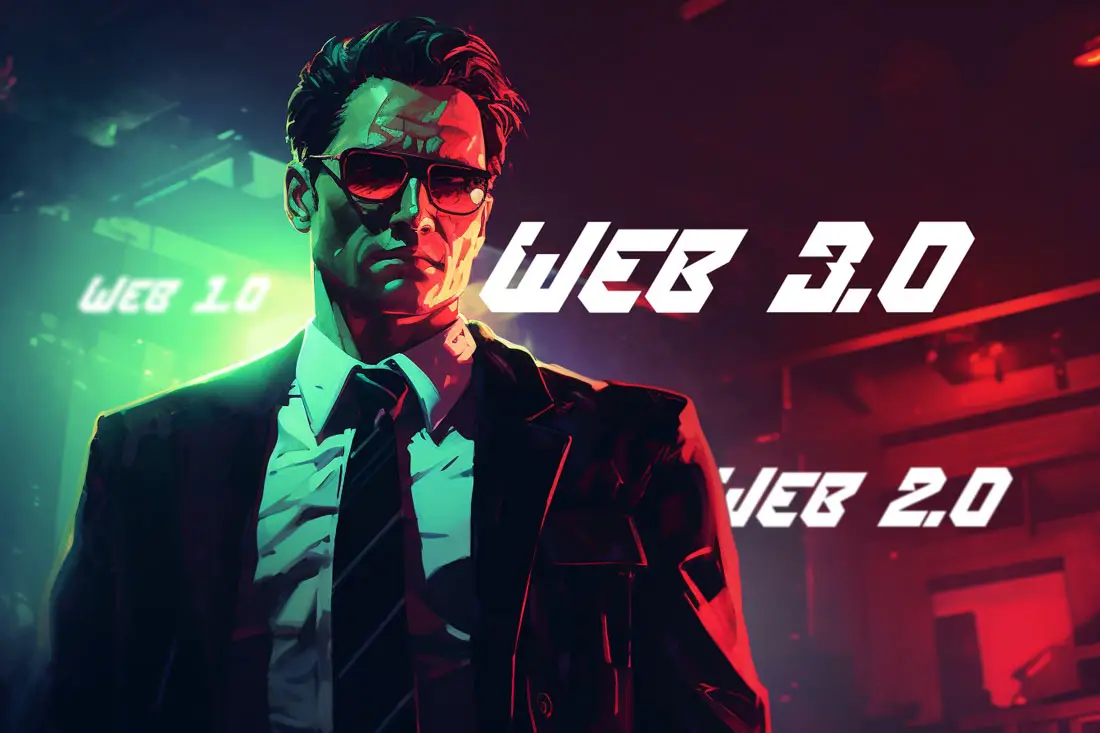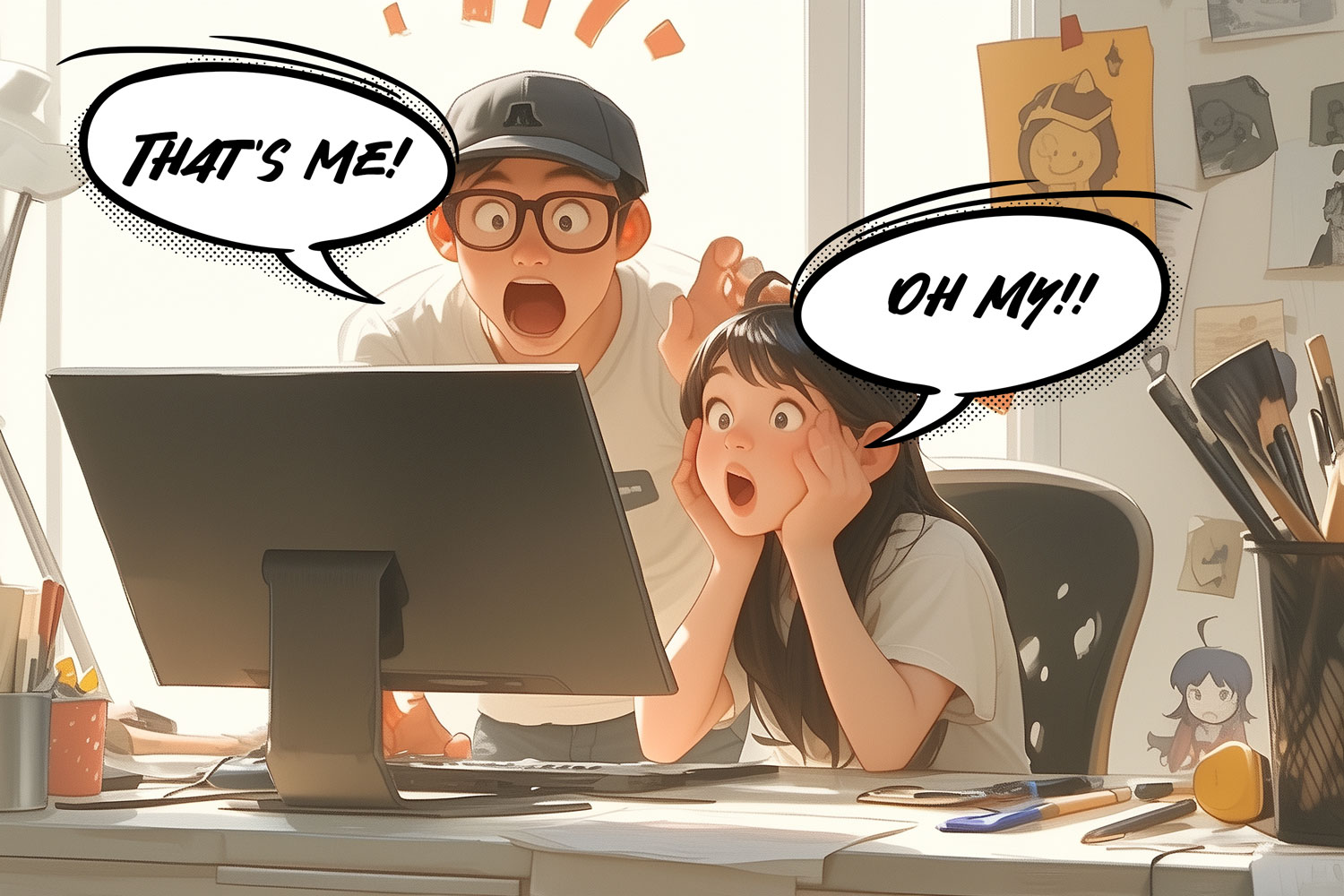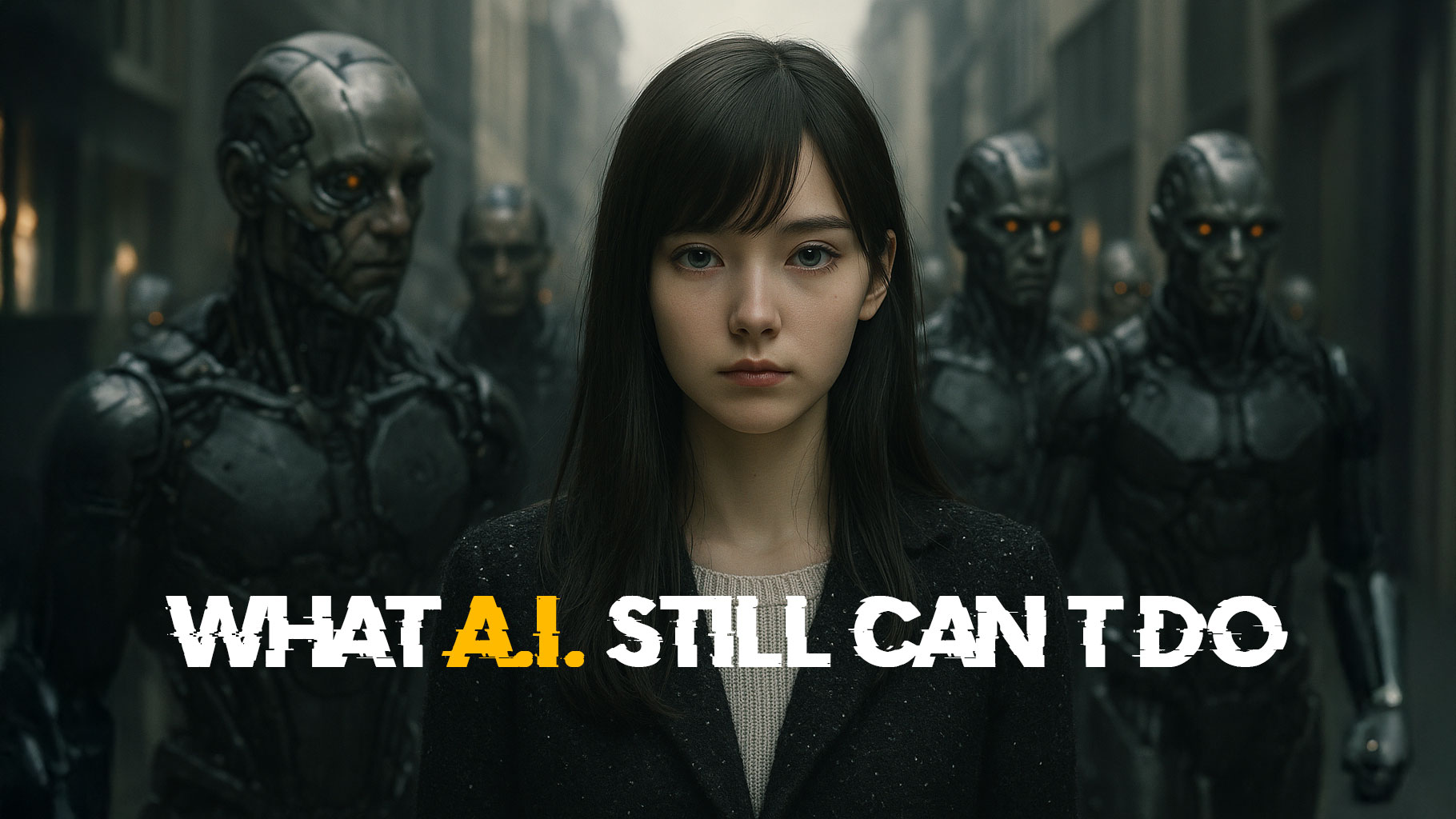
Breaking Down the Shift from Web1.0 to Web 3.0: What Changed and Why It’s Important
Breaking Down the Shift from Web1.0 to Web 3. A couple of years back, the crypto world was ablaze with the revolutionary concept of Web3.0, triggered by a wave of NFT projects and lofty promises of a decentralized internet utopia. The expectations were sky-high, but reality brought us back to earth with a thud.
Today, Web3.0 lies in the backdrop, caught in a whirlwind of skepticism and cynicism, labeled as a buzzword or worse, a fraudulent scheme. Its previous glory tarnished, yet, our reality remains, lodged in the firm grips of a centralized Web2.0, where the true potential of our data remains largely unexplored. In a rapidly advancing AI-driven world, the echoes of Web3.0 seem drowned, yet its significance and potential still stand tall.
In this blog post, we’re going to reboot and return to the fundamentals, dissecting the internet’s journey from Web1.0 to Web3.0. We aim to illuminate the key transformations across each phase, with a keen focus on the potential and principles of Web3.0, which despite its embattled reputation, are critically pivotal for the future of the internet.
In a time where our digital footprints echo louder than ever, and AI is common in our daily lives, the need to unpack and rightly implement Web3.0 grows increasingly urgent. So, let’s get into this narrative, retrospecting our digital past, wrestling with the present, and visualizing a future where we might actualize the full potential of Web3.0. Remember, a revolution deferred is not a revolution denied.
Table of Contents
Web 1.0: The Information Superhighway

Once upon a time, in the era of dial-up connections and pixelated graphics, the World Wide Web took its first baby steps into our lives. This period, known as Web1.0, can be rightly termed as the “Information Superhighway”, a one-way street where information was created by a few and consumed by many. It was an age of static web pages, simple HTML coding, and an Internet experience dominated by reading rather than interaction.
The dawn of the 1990s marked the beginning of this digital journey. Websites during this period were akin to digital brochures, delivering information right onto the screens of users. But it was a simple spectator sport. The users, although recipients of vast amounts of information, were passive consumers with little to no control over the content they received. The creators held the reins, publishing content that was strictly “read-only.”
Search Engines
Search engines began to crop up, guiding users through the vast expanses of the Web. Remember AltaVista, Yahoo!, and later Google? These pioneers indexed the information, becoming indispensable guides to this new generation.
Web 1.0 was a significant breakthrough, laying the groundwork for what was to come. However, it was a centralized system. The information flow was controlled, the user interaction was limited, and the possibilities of the Internet were yet to be fully unleashed. Despite these limitations, Web1.0 sowed the seeds for its more sophisticated successors, Web 2.0, and the yet to be fully realized, Web3.0.
As we travel in time from Web 1.0 to the tantalizing prospects of Web 3.0, it’s essential to appreciate the humble beginnings of the Internet. The static pages of Web 1.0 may seem archaic in today’s dynamic digital age, but they set the stage for the break throughs that followed. It was the first step towards an era of information democratization, a step that we continue to build upon even today.
Web 2.0: The Interactive Web
Then came the turn of the millennium and along with it, the rise of Web 2.0. The static, one-way streets of Web 1.0 evolved into bustling highways of interactive engagement. This wasn’t just an upgrade, but a complete transformation – a pivot from passive consumption to active participation. It was a shift that forever changed our relationship with the Internet.
Web 2.0, or as we like to call it, the ‘Interactive Web’, set the stage for user-generated content. It empowered Internet users with tools to create, share, and interact with content like never before. Blogging platforms, social media, wikis, video sharing sites – the landmarks of Web2.0 were numerous and their impact, profound. Suddenly, the Internet wasn’t just about consuming information, but also about creating it. It became a canvas for the exchange of ideas, fostering communication and collaboration on a global scale.
Search engines like Google became smarter, delivering more personalized and relevant content. Social media giants such as Facebook and Twitter emerged, transforming not just how we communicated, but also how we consumed news, did business, and much more. Internet-based services and applications became the norm, with companies like Amazon and Netflix leading the charge.

Shadowy Underbelly of Web 2.0
But among the glittering promise of Web2.0, it had a shadowy underbelly. Centralization emerged as a critical issue. A handful of powerful companies started to control vast swaths of the Internet, wielding enormous influence over data and user privacy. These tech behemoths not only owned and profited from the data generated by their users, but they also became the gatekeepers of the Internet.
While Web2.0 undeniably transformed the Internet landscape, making it more interactive and user-focused, it also set the stage for the issues we grapple with today – data privacy, security, and centralized control. These are the problems that Web3.0 aims to tackle. The promise of Web2.0 was about democratizing creation and interaction. The promise of Web3.0, as we’ll explore next, is about democratizing ownership and control.
Web 3.0: The Vision and the Reality

With the onset of the 21st century, we found ourselves on the cusp of another digital revolution, the eventual coming of Web 3.0. The vision was (and still is) for a truly decentralized and intelligent web – a democratic utopia where users hold sovereignty over their own data, and web interactions are as seamless as human conversations. Web 3.0, sometimes dubbed the ‘Semantic Web’ or the ‘Internet of Value’, aimed to reclaim the internet from the clutches of centralization and herald a new era of user-focused, privacy-first digital interactions.
Web 3.0 was about moving beyond just participation to ownership, promoting transparency, and fostering trust. It was rooted in the fundamental principle of decentralization, underpinned by blockchain technology, aiming to disperse control from a few powerful players to the individual user. Web 3.0 wanted to give users the right to own their data, to control how it’s used, and profit from it, should they choose to.
Your Digital Footprint
This new web promised to introduce a new digital identity concept, where every online interaction would contribute to a user’s digital footprint, stored securely on a decentralized network, immune to unauthorized access or manipulation. Web3.0 also promised a world where AI and machine learning would play a bigger role, improving user experiences through personalized, context-aware applications.
But, as with any revolution, the journey hasn’t been smooth. The concept of Web 3.0 exploded onto the scene, propelled by NFT projects, DeFi platforms, and lofty promises. However, the reality didn’t quite match the hype. The abuse of the concept by ill-intentioned actors and a lack of widespread understanding of the concept led to a wave of cynicism. Web3.0 was prematurely branded a buzzword, a scam, and dismissed by many. Rightfully so.
But this doesn’t render the idea of Web 3.0 null. Quite the opposite. The challenges it aims to address – data privacy, decentralization, and user control – are more pertinent today than ever. And with AI becoming an inextricable part of our digital lives, the need for a web that allows users to own their digital footprints is undeniable.
Web3.0 is not about overthrowing the current system overnight, but rather creating a paradigm shift in how we think about and interact with the web. It’s about striving for a more balanced, equitable, and user-focused web. The vision remains robust, and the need for it is real and pressing.

Yes, the initial euphoria has ebbed, and the journey is far from complete. Yet, we stand on the edge of potential transformation, waiting for the tide to turn. The critical dialogue must continue. Let’s not forget, Rome wasn’t built in a day, and neither will be Web3.0.

Introduction: The Problem of Art Theft and How it Affects Artists The problem of art theft has always been a major concern for artists, but with the rise of digital art and the advancements in AI technology, it has become even more complicated. Many AI art platforms like Stable Diffusion, Dall-E, and Midjourney are using…
The Importance of Web 3.0
Given the contentious reputation of Web3.0, it’s worth asking – why does it matter? Why should we care about this distant, seemingly complicated, and currently underdeveloped idea of a new web?
Decentralization and Ownership
In today’s web, we are users, but not owners. We consume content, participate, and contribute, but have limited control or ownership over our online presence. This discrepancy is exactly what Web3.0 aims to address. It proposes a web where users are more than just consumers; they are active participants and owners. In this paradigm, users have sovereignty over their data, the very lifeblood of the digital economy, and can control who accesses it and how it’s used.
Web3.0 also carries the potential to significantly disrupt the current power structures of the internet. No longer would a few powerful entities control most of the web’s content and data. Instead, Web3.0 promises an environment where power and control are distributed across the network, giving every participant an equal voice.
Data Privacy and Security
In a time where data breaches and privacy violations have become all too common, Web3.0’s emphasis on data privacy and security is incredibly pertinent. Blockchain, the backbone of Web3.0, is renowned for its robust security and transparency features. It allows data to be stored across a network of computers, eliminating single points of failure and making unauthorized access or manipulation extremely challenging.
Web3.0 also sees an internet where every user has a secure, unique, and verifiable digital identity, making fraudulent online activities significantly more difficult.
A More Personalized Web
Web3.0, often referred to as the ,Semantic Web, aims to make online experiences more meaningful and personalized. By allowing AI and machine learning to understand the meaning, context, and relationships between different types of content, Web3.0 can deliver a far more tailored user experience. Imagine a web where search engines understand exactly what you’re looking for, e-commerce platforms know your preferences, and digital assistants provide personalized recommendations based on your unique profile and past interactions.
Innovative and Economic Opportunities
Web3.0, with its inherent features of decentralization, transparency, and user control, paves the way for new business models and economic opportunities. From decentralized finance (DeFi) that offers financial services without intermediaries, to NFTs that enable artists to monetize their work directly, the possibilities are expansive.
Furthermore, as Web3.0 emphasizes user data ownership, it could introduce new streams of income for individuals who choose to monetize their data, making it a valuable asset rather than a mere byproduct of online activity.
In conclusion, while Web3.0 is still in its developing stages, its significance should not be underestimated. As our world becomes increasingly digital and AI-driven, a user-centric, secure, and intelligent web isn’t just a fancy idea – it’s a necessity. The path to Web3.0 might be complex, filled with challenges and uncertainties, but its potential rewards could very well reshape the digital world as we know it.

Are you a creator or photographer feeling confined by the control of major centralized social media platforms? Do you dream of a space where you can freely create, interact, and profit without the interference of big tech corporations? If yes, then you’re in the right place. I’m here to tell you about a promising alternative that’s been making waves in the creator economy – decentralized social media.
The Future of Web 3.0

Predicting the future of technology, particularly something as transformative and multi-faceted as Web3.0, is like trying to capture lightning in a bottle. But one thing is clear – the vision of Web3.0 carries immense potential and could herald a new era of digital freedom, security, and innovation.
While the precise timeline and trajectory of Web 3.0’s development remain uncertain, its guiding principles will continue to shape the conversation around our digital future. Concepts like decentralization, data privacy, user control, and personalization are likely to become increasingly central as we further integrate digital technologies into our lives.
In many ways, the seeds of Web 3.0 are already being sown. Blockchain technologies, cryptocurrencies, NFTs, and decentralized applications (dApps) are slowly but surely gaining mainstream recognition. At the same time, concerns around data privacy, security, and the growing power of tech giants are fueling calls for a more balanced and user-centric web.
As we move forward, it’s critical that we navigate the transition to Web3.0 with care, purpose, and a commitment to the values that make this new web worth striving for. This includes fostering inclusive digital literacy, advocating for ethical and sustainable tech practices, and ensuring the benefits of Web3.0 are accessible to all.
Conclusion: Web1.0 to Web 3.0
As we wrap up this exploration into the past, present, and future of the web, it’s worth remembering that our journey from Web1.0 to Web3.0 is a continual process of evolution, challenge, and opportunity.
Web1.0 gave us the ability to access and share information on an unprecedented scale. Web2.0 transformed us from passive consumers into active participants, shaping the online world with our creativity, opinions, and interactions. Now, the vision of Web3.0 is on the horizon, promising a web where users are not just participants, but owners, where our data is our own, and where the power of the web is truly decentralized.
The path to Web3.0 is complex, littered with skepticism, cynicism, and technical hurdles. But let’s not forget, the ideas that Web3.0 brings forward are more relevant now than ever before. Our data is not just a footprint; it’s our individuality. It’s our digital DNA, and its value should be recognized, respected, and protected.
Web3.0 isn’t just about a new iteration of the internet. It’s about reclaiming our digital destiny, taking ownership of our online presence, and shaping an internet that truly works for everyone. It’s a revolution that may not arrive tomorrow or even the next year, but its potential impact is undeniable, making it a journey worth pursuing.
The flame of Web3.0 might have flickered amidst the winds of hype and skepticism, but its embers are still aglow, quietly nurturing the promise of a decentralized, user-centric web. And as the saying goes, ‘A revolution deferred is not a revolution denied.’ The story of Web3.0 is just getting started.
Below, I want answer some of the pressing questions about Web 3.0.
- How will Web 3.0 change our lives?
- Will Web3 ever go mainstream?
- How do I get into Web3?
- What is the biggest problem in Web3?
- Why is Web3 a big deal?
- Does Web 3.0 exist yet?
- Why Web3 will change the world?
- How to make money from Web3?
- Is Web3 just crypto?
- What is Web3 in simple terms?
- How will Web 3.0 affect banking?
- Is Web 3.0 inevitable?
- Is Web 3.0 bad for the Environment?
- How does Web 3.0 affect the economy?
- What is the difference between Web3 and blockchain?
- How Web 3.0 will drastically change the creator economy?
- Is Web3 the future or hype?
- What is Web3 trying to solve?
- Can Web3 disrupt creator economy?
- Who is behind Web3?
- How Web 3.0 will benefit our lives?
- Why Web3 is the future of the creator economy?








Leave a Reply